Learn about common-emitter and common-base bipolar transistor amplifiers to help you design your own circuits.
By RAY MARSTON

THE CHARACTERISTICS OF Common-emitter and common-base bipolar junction transistor (BJT) amplifiers differ from those of the common-collector amplifier-and each other.
Those amplifiers are the subjects of this article. Last month the common-collector amplifier was discussed in detail in this series, and many different practical circuits were presented.
Figure 1 shows the three basic bipolar transistor amplifier circuits. It was reprinted from last month's article as was Table 1, which compares the characteristics of the three basic transistor amplifiers. Examination of Table 1 will reveal that the common-collector amplifier (Fig. 1-a) provides near-unity voltage gain, while presenting high input and very low output impedance.
Recall from last month's article that the common-collector amplifier is applied both as a unity-gain voltage follower and an impedance converter. By contrast, both the common-emitter (Fig. 1-b) and common base amplifier (Fig. 1-c) circuits provide high-voltage gain, so they function primarily as voltage amplifiers. The common-base circuit, for example, offers near unity current gain, so it usually functions as a wide-band or high frequency voltage amplifier.
The common-emitter circuit, on the other hand, offers both high current gain and high voltage gain, making it an attractive high-gain power amplifier. This circuit, also known as a grounded emitter circuit, is typically functions as a digital or analog amplifier.
Digital circuitry
Figure 2 is a schematic for a simple NPN common-emitter amplifier that can function as a digital amplifier, inverter, or switch. The input signal can be either zero volts or a high positive value. (It should be higher than 0.6 volt but less than the power supply voltage.) When the input is at zero volts, the transistor is fully cut off; in that state the output equals the positive power supply voltage.
When the input is switched to a positive value greater than 0.6 volt (the value needed to forward bias the base-emitter junction of a 2N3904 transistor), the transistor turns on. Collector current flows in load resistor RL and "pulls" the output voltage toward zero.
If the input voltage is high enough, the transistor is driven fully on, or into saturation. Then the output voltage falls to a saturation value of only 0.2 to 0.3 volt. As a result, the output signal is an inverted version of the input waveform.
In Fig. 2, resistor RB acts principally as a protective device to limit the base-drive current to a non-destructive value. The input impedance of the circuit is slightly greater than the RB value. The value of resistor RB is inversely related to the waveform rise and fall times: The higher its value, the slower are those times.
This circuit drawback can be overcome by shunting RB with a "speed-up" capacitor with a value of about 0.001 µF, as shown dotted in Fig. 2. In practical applications, RB should have as low a value as practical, consistent with protecting the transistor and input impedance requirements. However, it should never be greater than RL x hFE. Figure 3 is the schematic for a PNP version of the digital inverter or switch circuit. Here the transistor is switched fully ON when the input is zero volts. In that condition, the output is about 0.2 volt less than the positive power supply value.
The 2N3906 transistor turns off only when the input rises to a value that is within 0.6 volt of the supply value. The output then falls to zero volts.
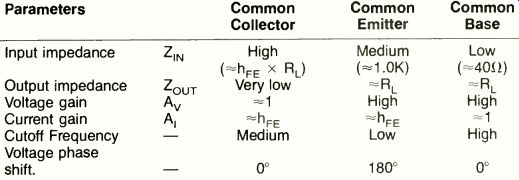
TABLE 1 CHARACTERISTICS OF THE THREE BASIC TRANSISTOR AMPLIFIERS
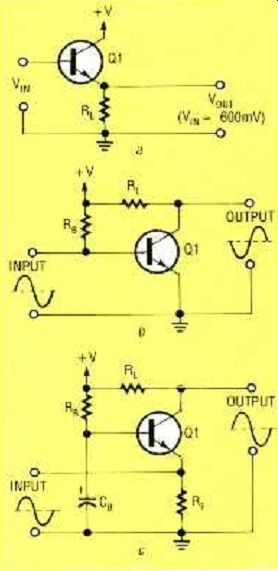
FIG. 1 THREE. BASIC TRANSISTOR amplifiers: common collector (a), common
emitter (b), and common-base (c).
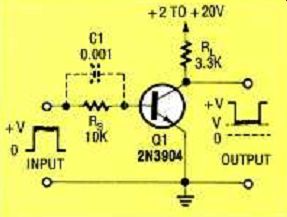
FIG. 2 DIGITAL INVERTER. SWITCH based on an NPN transistor.
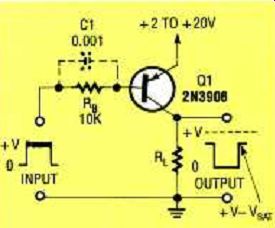
FIG. 3-DIGITAL INVERTER/SWITCH based on a PNP transistor.
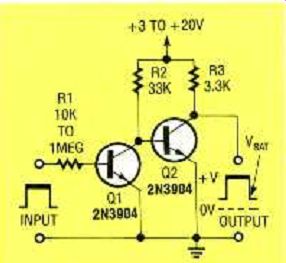
FIG. 4 HIGH-GAIN. NON-INVERTING digital amplifier based on a single NPN
transistor.
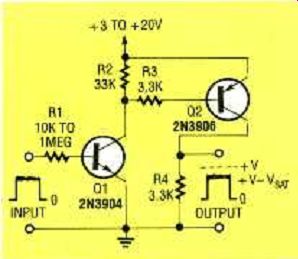
FIG. 5 ALTERNATIVE NON-INVERTING digital amplifier or switch with NPN and
PNP transistors.
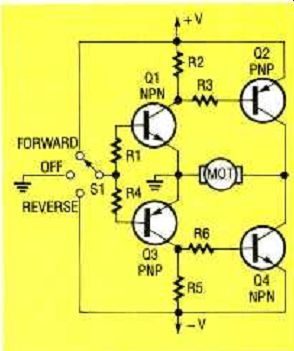
FIG. 6-DC-MOTOR DIRECTION CONTROL circuit shown without component values.
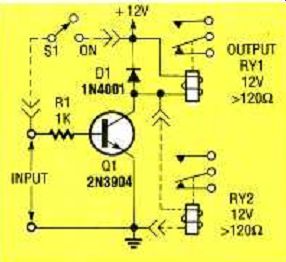
FIG. 7 SIMPLE RELAY-DRIVING circuit.
The ability of the circuits in Figs. 2 and 3 to respond to lower input signals (sensitivity) can be increased by replacing Q1 with two transistors in a Darlington pair. The circuits in both Figs. 4 and 5 are high-gain, non-inverting digital amplifiers or digital switches.
The circuit in Fig. 4 which includes the Darlington pair of NPN transistors operates as follows: When the input signal is zero volts, Q1 is cut off, effectively removing it from the circuit. Under this condition, Q2 is driven into saturation through resistor R2, and the output signal has a threshold value of 0.2 to 0.4 volt.
By contrast, if the input signal is significantly greater than 0.6 volt, Q1 is driven into saturation and pulls the base of Q2 down to only about 0.2 volt above zero. Under this condition, Q2 is cut off and the output is at the full supply voltage.
The circuit in Fig. 5, which includes one NPN and one PNP transistor, operates in a different way than that described for Fig. 4. When the input is at zero volts, Q1 is cut off, which . in turn, cuts off Q2 through resistors R2 and R3. Therefore, the output value is zero volts.
However, when the input to the base of Q1 goes high (above 0.6 volt), Q1 is driven on and obtains most of its collector current from the base of Q2 through R3. This action drives Q2 into saturation. When this happens, the output reaches a value about 0.2 volt less than the positive supply voltage.
Figure 6 is a conceptual schematic showing how the complementary pair of transistors from Fig. 5 can be organized to form a DC-motor control circuit with a dual power supply. This circuit could be operated by digital logic, and has applications in robotics or other machine control. This is how the circuit works: When switch S1 is in the FORWARD position, Q1 is driven on through R1, and Q2 is driven on through R3 by Q1. However, Q3 is cut off through R4, and Q4 is cut off by R5 and R6. Thus the "live" side of the motor is connected through Q2 to the positive supply, and the motor runs in a forward direction.
When S1 is in the OFF position, Q1 is cut off through R1, and Q2 is cut off through R2 and R3. Simultaneously Q3 is cut off through R4, and Q4 is cut off through R5 and R6. Under this condition, the "live" side of the motor is open-circuited so the motor does not run.
Finally, when S1 is in the REVERSE position, Q3 is biased on through R4, and Q4 is driven on through R6 and Q3. However, Q1 is cut off through R1, and Q2 is cut off through R2 and R3. Therefore, the "live" side of the motor is connected through Q4 to the negative power supply, and the motor runs in the reverse direction.
Relay drivers
The basic digital circuits shown in Figs. 3 to 5 can drive a variety of resistive loads such as incandescent lamps and indicators consisting of LEDs and resistors without modification.
However, if they are to drive inductive loads such as relay coils or motors, a protective diode will limit the high turn-off voltage to a value that can be handled safely by the transistor.
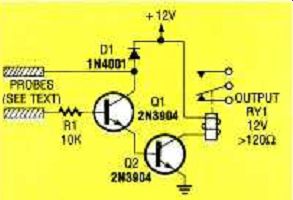
FIG. 8 RELAY-DRIVING CIRCUIT that can be actuated by human grasp or the
conduction of water.
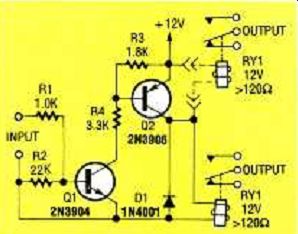
FIG. 9 ULTRA-SENSITIVE RELAY driver needs a 0.7-volt, 40-microampere input.
Common-emitter amplifiers are more sensitive relay drivers than the common-collector amplifiers described last month.
Figures 7, 8, and 9 are practical common-emitter relay driving circuits.
Figure 7, for example, is the schematic for a simple but versatile single-transistor relay driver. It increases the relay's operating current sensitivity by a factor of about 200 (the nominal hFE value of transistor Q1). Resistor R1, which provides base-drive protection, can have a larger value than the 1 kilohm shown in Fig. 7.
The relay can be turned on either by applying a DC input voltage greater than 0.7 volt or by operating switch S1 (shown as a plug-in component connected by dotted lines). The circuit shown in Fig. 7 is non-latching, but it can be made self-latching by including another relay (RY2) between the collector and emitter of Q1, as shown in the diagram. The circuit's current sensitivity is limited by the current gain of Q1, but it can be increased to about 20,000 by replacing Q1 with a Darlington pair as shown in Fig. 8.
In a practical application, the relay in the Fig. 8 circuit can be actuated by shorting a pair of stainless-steel probes, each with a resistance value less than a few megohms. Tap water and human skin have resistance vanes under a few megohms, so this circuit can function as a water, or touch-operated relay switch.
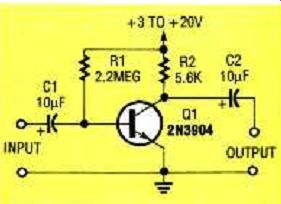
FIG. 10-SIMPLE NPN COMMON-emitter amplifier.
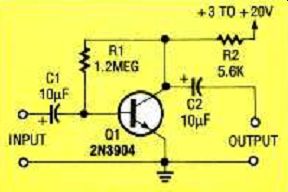
FIG. 11 COMMON-EMITTER amplifier with feedback biasing.
C1 10µ
F1 1 c2
INPUT T0.1
0----R2 220K
01 2N3904
+3 TO +20V R3 5.6K C3 10pF OUTPUT J

FIG. 12 COMMON-EMITTER amplifier with AC-decoupled feedback biasing.
R1 180K
C1 OOµ+IE INPUT
+V 2N3904 R2 100K 5.6K R3
+3 TO +20V
=2/3 +V ti Q1 R4 C3 5.6K 10µF (--o OUTPUT
=1/3 +V-
0.6V
02 47 µF
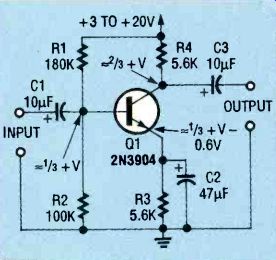
FIG. 13 COMMON-EMITTER amplifier with voltage divider biasing.
The relay will be actuated if the probes are grasped by the hands. It would also be actuated if the probes were immersed in water. Thus the circuit could be part of a water-level alarm circuit. The relay can actuate an auxiliary alarm circuit if rising water shorts the probes.
Figure 9 is a schematic for another ultrasensitive, dual-transistor relay driver (based on Fig. 5). An input of about 0.7 volt at 40 microamperes is needed to actuate the relay. The 22kilohm resistor between the base and the emitter of Q1 ensures that both Q1 and Q2 are fully cut off if the input terminals are open-circuited.
Linear biasing circuits
Figure 10 shows how a common emitter amplifier can become a linear AC amplifier. This is done by applying a DC bias current to the base of Q1 so that the collector's quiescent value is about half its supply voltage.
This bias permits the amplifier to accommodate high AC output swings without distorting them. The AC-input signal is applied between the base and ground of Q1, and the AC-output signal is taken between the collector and ground.
To design an AC amplifier as shown in Fig. 10, first decide on the value of load resistor R2.
The lower this resistance value, the higher will be the amplifier's upper cut-off frequency. (This is due to the lower shunting effects of stray output capacitance on the effective impedance of the load.) Moreover, a low value of R2 will cause a higher quiescent operating current in Q1. In Fig. 10, resistor R2 has a value of 5.6 kilohms, a compromise that will amplify a frequency of about 120 kHz and draw about a milliampere of quiescent current from a 12-volt supply. To bias the output to half the supply voltage, R1 must have a value of

FIG. 14 COMMON EMITTER amplifier with a fixed gain of 10.
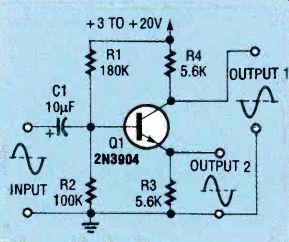
FIG. 15 PHASE-SPLITTER with unity gain.
R2 x 2hFE.
R1 = 2 x 2hFE = 2 x 200 x 5600 2.2 megohms where R2 is 5600 ohms and hFE is 200
Input impedance and voltage gain for this circuit are both determined by the impedance of transistor Q1's internal base-to-emitter junction. For a 2N3904, this value will be about 25 /Ic, where le is the collector current value in milliamperes. (This impedance is 25 ohms at 1 mA, 12.5 ohms at 2 mA, or 50 ohms at 0.5 mA.) The input impedance into the transistor base is: ZIN = hFE x 25 /Ic = 200 x 25 = . 5 kilohms at 1 mA (shunted by R1)
The voltage gain (A) of the circuit in Fig. 10 is calculated as follows:
A, = R2 /25 /Ic = 5600/25 = 200 at 1 mA
This gain figure (which translates into approximately 46 dB, also determines the theoretical maximum attainable upper frequency response, measured at the-3-dB point of the frequency response curve. It equals f,-/ A where fT is the transit time limit of minority carriers across the base region. (fT is the frequency at which hFE decreases to unity, and is the measure of the transistor's high-frequency performance.) The fT of the 2N3904 is about 300 MHz.
Therefore, the maximum frequency response of the circuit in Fig. 10 (ignoring the effects of stray capacitance) is 300 MHz/200 = 1.5 MHz.
A shortcoming of the Fig. 10 circuit is that its quiescent ...

FIG. 16-ALTERNATIVE AMPLIFIER with a fixed gain of 10.
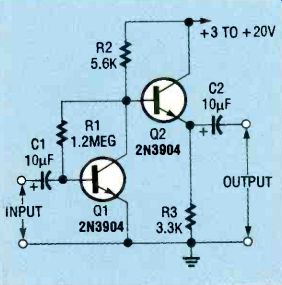
FIG. 17-WIDEBAND, TWO-STAGE common emitter amplifier.
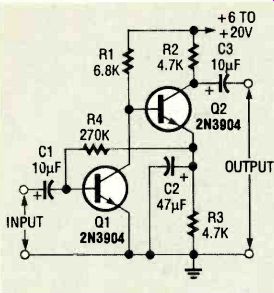
FIG. 18-HIGH-GAIN, TWO-STAGE amplifier.

FIG. 19-ALTERNATIVE HIGH-GAIN two-stage amplifier.
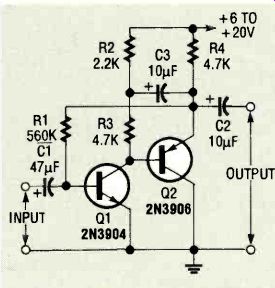
FIG. 20 BOOTSTRAPPED HIGH-GAIN two-stage amplifier.
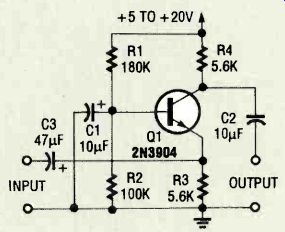
FIG. 21 COMMON-BASE AMPLIFIER with two output terminals.

FIG. 22 DIFFERENTIAL AMPLIFIER OR "LONGTAILED" pair.

FIG. 23 PHASE SPLITTER based on the differential amplifier.
... biasing point is a function of transistor current gain (hFE). This handicap can be overcome by modifying the circuit as shown in Fig. 11. Here 1.2 megohm biasing resistor R1 is connected to provide DC feedback between the base and collector. Its value was determined by multiplying R2 (5.6 kilohms) by hFE (200). Feedback occurs when any shift in the output biasing point takes place due to variations in hFE, ambient temperature changes, or a shift in critical value of a connected passive component. Feedback automatically introduces a counteracting current in the base-current bias, which tends to cancel the original shift.
The Fig. 11 circuit offers the same bandwidth and voltage gain as the circuit in Fig. 10, but it has a lower input impedance because the AC feedback of the Fig. 11 circuit reduces the effective value of resistor R1.
That resistor, which shunts the 5 kilohm base impedance of Q1, is reduced by the voltage gain of 200. As a result, total input impedance is 2.7 kilohms.
The shunting effects of the biasing network can be eliminated with two feedback resistors and AC decoupling capacitors, as shown in Fig. 12.
The ultimate in biasing stability can be obtained with potential divider biasing as shown in Fig. 13. Here, the voltage divider formed by junction of resistors R1 and R2 applies a quiescent voltage slightly higher than one-third of the supply voltage on the base of Q1. "Voltage follower" action reduces the supply voltage at Q1's emitter by 0.6 volt.
As a result, one-third of the supply voltage is developed across 5.6kilohm emitter resistor R3. Because the emitter and collector currents of Q1 are approximately equal, the same voltage appears across 5.6-kilohm resistor R4. This sets Q1's collector at a quiescent value of two thirds of the supply voltage.
Emitter resistor R3 is AC-decoupled through C1, giving the circuit a voltage gain of 46 dB for AC signals.
Circuit variations
Figure 14 shows how the Fig. 13 circuit can be modified to give a fixed voltage gain of about 10. The operation of these circuits depends on a characteristic of common-emitter amplifiers: voltage gain equals the collector load impedance value divided by the effective emitter-impedance value.
In Fig. 13, the effective emitter impedance equals that of the internal base-emitter junction; both equal 25 ohms at 1 milliampere. Thus this circuit has a voltage gain of about 200. By contrast, in Fig. 14, resistor R3 is decoupled by series-connected capacitor C2 and resistor R5. Therefore, the AC emitter impedance equals the internal junction value in series with the equivalent parallel values of R3 and R5. This becomes about 560 ohms, yielding a voltage gain of about 10. Different gain values can be obtained by changing the value of R5.
Figure 15 is a simple variation of Fig. 14. In this circuit, R3 is not decoupled, and its impedance equals the value of R4.
This gives the circuit a unity voltage gain. As a result, two unity-gain output signals are available: The collector output 1 is 180° out-of-phase with the input signal, but the emitter output 2 is in phase with the input signal. The circuit is called a unity-gain phase-splitter.
Figure 16, a variation of Fig. 11, offers 46 dB of voltage gain between the base and collector of Q1 but feedback biasing resistor R3 is AC shunted by R2, giving the circuit a base impedance of about 500 ohms.
Resistor R1 is in series with the input signal and the base of Q1. As a result, RI in conjunction with the 500-ohm base impedance, attenuates the signal between the Q1's input and base. The overall voltage gain of the circuit is about 10, or R2/R1.
Figure 17 shows how the circuit in Fig. 11 can be modified to give wideband performance by connecting direct-coupled Q2's emitter-follower stage between Q1's collector and the output terminal. Earlier, it was pointed out that the Fig. 11 circuit can have a theoretical maximum bandwidth of 1.5 MHz. Unfortunately, the shunting effect of stray output capacitance on R2 reduces that theoretical value to about 120 kHz. However, by buffering the output through Q2, these capacitive shunting effects can be reduced, and bandwidth can be extended to several hundred kilohertz.
High-gain circuits
A single-transistor common-emitter amplifier circuit cannot have a voltage gain that is significantly greater than 46 dB when it has a resistive collector load. If voltage gain higher than 46 dB is required, the circuit must have more than one transistor.
The circuit in Fig. 18 acts like a pair of direct-coupled common-emitter amplifiers. Transistor Q1's output is fed directly into Q2's base to give an overall voltage gain of about 6,150 or 76 dB. However, the upper frequency is limited to only about 35 kHz.
Feedback biasing resistor R4 is fed from Q2's AC decoupled emitter, which "follows" the quiescent collector voltage of Q1, rather than Q1's collector directly. In addition, the bias circuit is effectively AC-decoupled.
Fig. 19 shows a alternative version of the circuit in Fig. 18 with an PNP output stage that offers the same performance as the Fig. 18 circuit.
The Fig. 20 circuit has a different method for obtaining a high voltage gain of about 2000 or 66 dB. 11-ansistor Q1 is connected as a common-emitter amplifier with a split collector load of R2 and R3. Transistor Q2, connected as a common-collector amplifier or emitter follower, feeds the AC output signal from Q1's collector back to the junction of resistors R2 and R3 through capacitor C3.
This feedback bootstraps the value of resistor R3 (see last month's article) so that its acts as a near-infinite impedance to AC signals, and Q1 produces high voltage gain. The bandwidth of this circuit is only about 32 kHz, but its input impedance is only 330 ohms.
Other voltage amplifiers Figure 21, for example, shows a common-base amplifier that offers wideband response. It is biased as shown in Fig. 13.
However, in the Fig. 21 circuit, the base is AC decoupled through C1, and the input signal is applied to the emitter through C3.
The circuit has a very low input impedance that equals the impedance of the forward-biased internal base-emitter junction. That impedance has the same voltage gain as the common emitter amplifier (about 46 dB), and there is no phase shift between the input and output waveforms.
Figure 22 is a differential amplifier or "long-tailed" pair. The two transistors share the common emitter resistor R7 (the "tail "), and the amplifier's bias point can be adjusted by trimmer potentiometer R8 so that identical collector currents are conducted in both transistors.
That condition means that the collector voltages are equal under quiescent conditions.
Transistors Q1 and Q2 interact through R7, the emitter "tail." The output signals available from both collectors are proportional to the difference (the differential voltage) between the two input signals.
Therefore, if identical signals are applied at the two inputs, the circuit has a zero output.
Figure 23 is the circuit of Fig. 22 modified to become a phase-splitter. It will provide two output signals 180° out-of-phase from a single-ended input.
------------------
Also see: